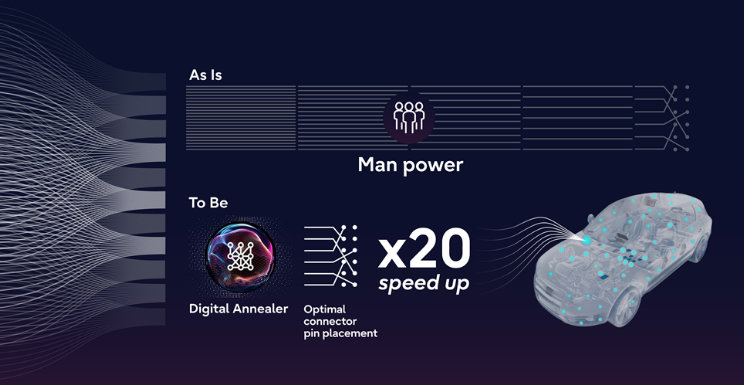Insider Brief
- A Rutgers professor explores why complex numbers are widely used in quantum mechanics despite not being mathematically indispensable, particularly focusing on their role in describing particle spin.
- Alternative formulations, such as using real numbers or quaternions exist, do exist, however complex numbers offer a more natural and efficient way to represent quantum systems.
- The work could have implications for the quantum technology industry by potentially influencing new approaches in quantum computing and reshaping how researchers think about quantum mechanics.
Physicists have long asserted that complex numbers are essential to formulating quantum mechanics, a claim that sets quantum theory apart from classical physics, where such numbers are largely viewed as dispensable.
But, are they actually indispensable?
In an article on the American Philosophical Association’s website, Jill North, a professor of philosophy at Rutgers University, explores why, despite being replaceable in principle, complex numbers seem to naturally fit quantum mechanics and the world it describes.

North argues that while complex numbers may seem indispensable, they aren’t strictly necessary.
“Any physical theory can be mathematically formulated in different ways, and it is a straightforward mathematical fact that any expression involving complex numbers can be rewritten in terms of real ones,” writes North.
The Central Puzzle: Why Complex Numbers?
If you’re like me and spent most cool autumn mornings watching the leaves drift past the classroom window while your Algebra II teacher discussed complex numbers, I’ve included a refresher.
Complex numbers can be described as mathematical objects made up of two parts: a real number and an imaginary number. The real part is familiar — it’s the kind of number you encounter in everyday life, like 3 or -5. The imaginary part, however, involves the square root of -1, often denoted as “i,” which doesn’t exist on the traditional number line. Together, a complex number might look like this: 3 + 2i. While real numbers can describe basic quantities like distance or time, complex numbers allow for more nuanced descriptions of physical systems. That’s probably why, despite being somewhat abstract, complex numbers can provide a more natural, compact way to capture the intricacies of quantum systems than real numbers alone. Later, we’ll explore some specific examples of those intricate, nuanced aspects of quantum mechanics.
North’s research, then, focuses on unraveling that fundamental mystery resting at the intersection of quantum mechanics and mathematics. Classical physics — the set of laws that governs everyday objects — seems to get by without complex numbers. But quantum mechanics, which deals with the behavior of subatomic particles, leans heavily on them.
“It’s not often discussed in the physics community why complex numbers are so central to quantum mechanics,” North writes, a notion that served as her inspiration to explore the issue more deeply.
Complex numbers offer an elegant description of quantum systems, especially when it comes to representing quantum states, such as the spin of particles — a concept with no direct analogy in classical physics. Spin, a fundamental property of quantum particles like electrons and quarks, is key to understanding how particles behave on the quantum level.
“The basic idea (which I spell out in a paper in progress) is that there must be enough ‘room’ in the formalism to encode all the possible spin states of a system, and a formalism in terms of complex numbers allows us to do this in a particularly natural and direct way,” writes North. “Complex numbers are not absolutely required, but given the experimental results involving spin, there must be something in the formalism that mirrors the structure of the complex numbers.”
Using only real numbers to describe these systems is possible, but it leads to cumbersome mathematical complications.
“The complex formulation does not need those extra constraints,” North writes. “It is more direct, lacking the excess mathematics that must be dispensed with by hand in the corresponding real formulation.”
That raises the question: What is it about the world described by quantum mechanics that makes complex numbers the most effective tool for modeling it? North writes she believes the answer lies in how quantum mechanics, particularly through spin, requires a mathematical structure that mirrors the behavior of complex numbers.

Implications for the Quantum Technology Industry
Taking a step back: North’s inquiry is not just a philosophical puzzle — it may have real implications for the quantum technology industry, which relies on the principles of quantum mechanics to develop new technologies, particularly in quantum computing. In quantum computing, qubits (quantum bits) rely on the principles of superposition and entanglement—both of which are described using complex numbers, for example.
However, as North points out, complex numbers may not be the only mathematical approach in understanding the phenomena. While they are the most straightforward method currently in use, other formulations have been explored, as North notes: “It should be possible, in principle, to restate any formalism that employs complex numbers in terms of real numbers, the formalism for quantum mechanics being no exception. And, indeed, since the 1960s, there have been formulations of quantum mechanics available that do away with complex numbers (including versions that use only real numbers and ones in terms of quaternions).”
Again, perhaps as a refresher, quaternions are more of an extension of complex numbers, consisting of one real part and three imaginary parts. Scientists rely on them to describe rotations in three-dimensional space, for example. The essential point is that while complex numbers are the standard mathematical tool for representing quantum states, quaternions could be used as an alternative framework, offering advantages in handling more complex systems, though — unfortunately for the classroom autumn leaf peepers out there — they add layers of mathematical complexity.
Ultimately, it’s possible in principle that further scientific investigations into complex numbers and other mathematical variations could lead to novel approaches in quantum computing that could be more efficient or practical, at least in certain contexts.
We could imagine that, as quantum technologies become more sophisticated, alternative mathematical models might offer different ways to optimize quantum algorithms or address specific computational challenges. North’s work could provide a deeper understanding of the theoretical underpinnings of these technologies, potentially driving future innovations.
Questioning Recent Claims in Quantum Mechanics
North’s research also addresses recent experimental claims regarding the indispensability of complex numbers. In recent years, two separate research groups claimed to have experimentally verified that complex numbers are essential for representing certain quantum phenomena, particularly in multi-particle systems. These findings garnered significant attention in the scientific community and the popular press, with headlines proclaiming the “necessity” of complex numbers in quantum mechanics.
However, the philosopher remains skeptical of these conclusions. “Given the mathematical facts, that cannot be right,” she writes.
According to North, the experimental claims rely on certain assumptions that weaken the overall conclusions.
“At most, the conclusion we should draw is that one kind of real formulation cannot do the job,” she writes. “Not that no real formulation can.”
This subtle but important distinction leaves open the possibility that quantum mechanics can be reformulated using different mathematical structures.
Philosophical and Scientific Impact
The article touches on deeper philosophical questions that reach beyond quantum mechanics. North’s work is part of a larger effort to understand why some parts of mathematics seem to work so well in describing certain physical theories. This investigation into the connection between mathematics and reality could have broad implications for the foundations of physics.
One key philosophical takeaway is the importance of “perspicuous” formulations—mathematical frameworks that naturally reflect the structure of physical reality. As North notes, this idea has a historical precedent: many scientific discoveries have been made when the right mathematical framework illuminated previously hidden connections. Quantum mechanics, with its reliance on complex numbers, may be another case where the mathematics offers a uniquely clear view of reality.
Her work also has implications for the ongoing debate over wavefunction realism—a question about whether the wavefunction, the central object in quantum mechanics, represents a real physical entity or merely serves as a mathematical tool. North argues that the inclusion of spin complicates this debate even further, as the wavefunction must now represent not just a complex-valued field, but a spinor-valued one.
North writes she recently secured a National Science Foundation (NSF) grant to investigate the role of complex numbers in quantum mechanics and further support this research into why complex numbers seem to be more than just convenient tools in quantum theory.


















